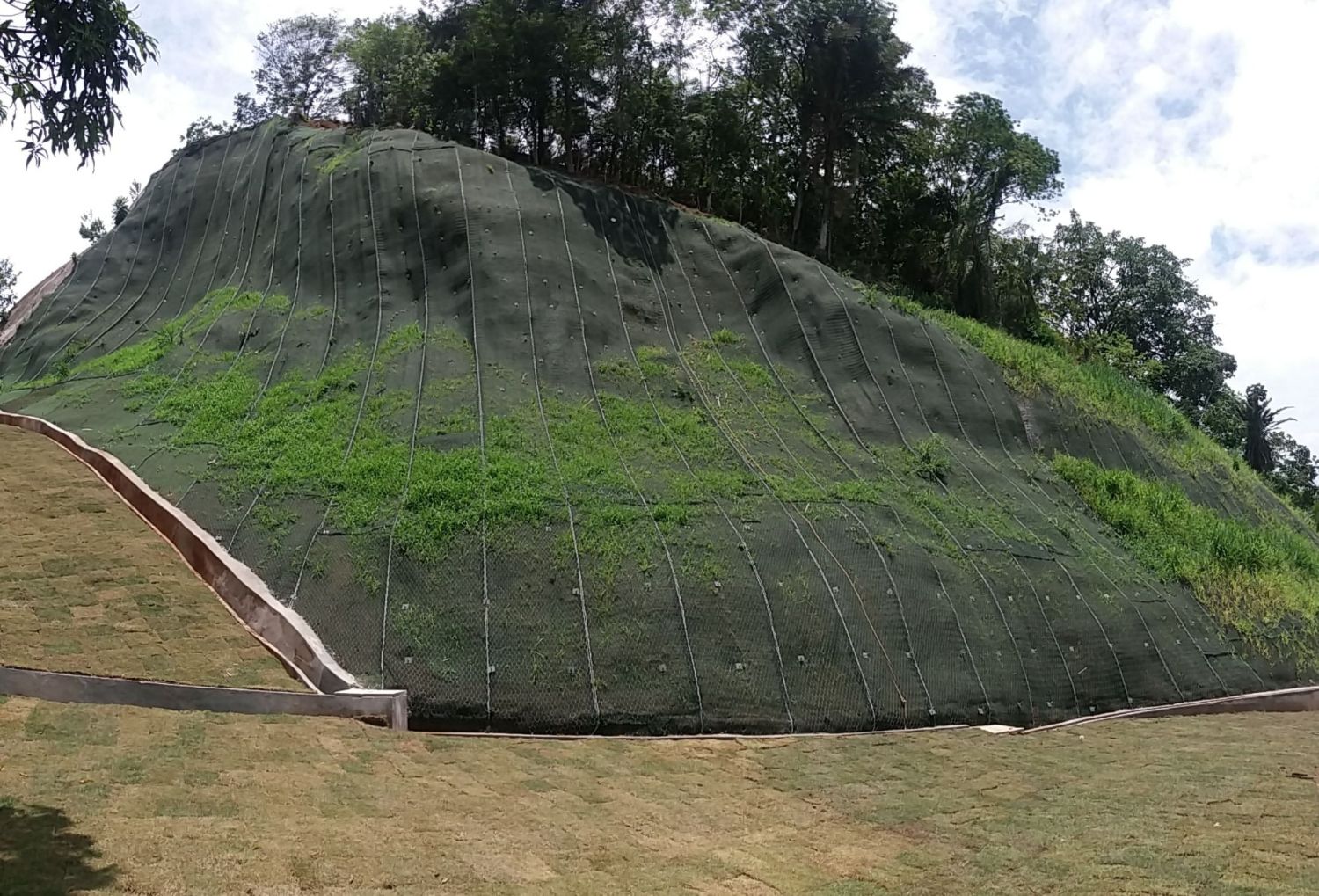2024
Samal, Bataan
Solenergy Systems Inc.
Erosion Control at West Samal Solar Power Plant
Challenge
Within the solar plant site, several sloping areas have been experiencing significant surface erosion, particularly during the wet season. The combination of steep gradients, loose soils, and heavy rainfall accelerates runoff, stripping away topsoil and weakening the natural stability of the slopes. If left untreated, this process will continue to degrade the soil structure and compromise the long-term durability of the site. The risk is not limited to environmental damage alone; uncontrolled erosion can directly threaten the foundations supporting the solar panel arrays. Over time, this could lead to the misalignment of panels, damage to mounting systems, and even system failure. Such structural instability would reduce the overall efficiency of the solar farm and increase maintenance costs. Given the scale and importance of the project, a targeted and effective erosion control strategy was essential not only to protect the investment in renewable energy infrastructure but also to ensure reliable power generation and the safety of the site.
Solution
Following a detailed site assessment, MacMat® R1 005 was selected as the most effective erosion control solution for the project. MacMat® R1 005 is a high-performance, geogrid-reinforced erosion control mat designed to provide both immediate slope protection and long-term stability. Its unique three-dimensional matrix anchors seed and supports rapid vegetation growth across slope surfaces. As plants establish, their root systems interlock with the mat, further binding the soil and significantly improving resistance to surface runoff and rainfall impact. The integrated geogrid enhances the mat’s mechanical strength, making it particularly suited for steep and highly erodible slopes like those within the solar plant. By combining mechanical reinforcement with natural vegetation, the system created a dual layer of protection against erosion. The solution not only stabilized the vulnerable slopes but also reduced the risk of structural compromise to the solar arrays. In addition, the installation minimized the need for frequent maintenance, promoted sustainable site management, and ensured the long-term efficiency and safety of the solar farm operations.
Used Products

